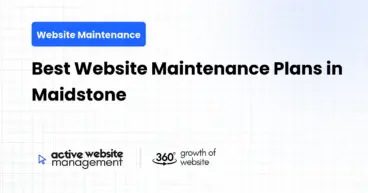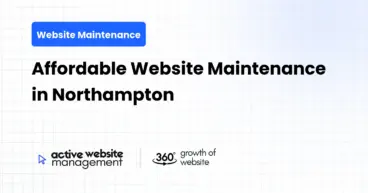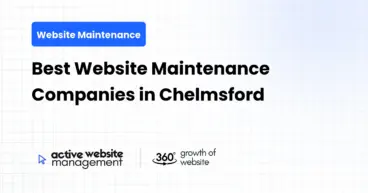December 16, 2024
8 min read
In the fast-paced digital world, healthcare businesses must maintain a seamless and secure online presence to ensure their patients’ needs are met efficiently. A well-maintained website enhances trust, supports better communication, and improves the overall patient experience. However, managing a healthcare website requires more than just occasional updates—it involves proactive monitoring, security, and optimization to stay relevant and efficient.
This article will delve into the best website maintenance tips for healthcare businesses, with insights into website management, SEO practices, security protocols, and content updates, to ensure your site delivers a smooth, professional, and trustworthy experience for visitors.
Why Website Maintenance is Crucial for Healthcare Businesses
Website maintenance for healthcare businesses is vital for several reasons:
- Trust and Credibility: A well-maintained website instills confidence in patients, who need to know they are dealing with a reliable healthcare provider.
- Compliance and Security: Healthcare websites need to comply with regulations like HIPAA in the U.S. Regular updates and security protocols ensure compliance and safeguard patient data.
- User Experience (UX): A slow or outdated website can lead to frustrated patients and drive them away. Regular updates improve the website’s performance and UX.
- Search Engine Visibility: Search engines like Google favor updated, well-maintained websites. SEO-optimized sites rank better, making it easier for potential patients to find your services online.
1. Regularly Update Your Content
Content updates are an essential part of website maintenance. Healthcare businesses must ensure that their website content is not only fresh but also accurate and in line with the latest medical standards and best practices. Here are a few tips on how to keep your content updated:
Medical knowledge evolves, and it is important to ensure that the information on your website reflects the latest research and guidelines. For example, articles on treatment procedures, diseases, and medications should be updated periodically.
Don’t Just Maintain Your Website—
Grow It using Active Website Management! Don't Wait for Growth—Accelerate It with Active Website Management
Add Fresh Blog Posts
Creating blog content is a great way to engage visitors while enhancing your website’s SEO. Regularly posting articles about healthcare trends, patient success stories, new treatments, and prevention tips can help keep your site relevant.
If your healthcare services expand or change, make sure your website reflects those updates. Whether you add new services, change office hours, or update your contact information, timely updates are critical.
Website performance plays a key role in patient satisfaction. A slow website can discourage patients from accessing important health information. Slow loading times can also negatively affect SEO rankings.
Compress Images and Files
Images related to healthcare services, doctors, or clinics must be high quality, but large image files can slow down your site. Use tools like ImageOptim to compress your images without losing quality.
Use a Content Delivery Network (CDN)
A CDN can distribute your website’s content across multiple servers, reducing load times for patients from various geographic locations.
Test Your Website Speed Regularly
Regular testing through tools like Google’s PageSpeed Insights helps identify speed bottlenecks and areas for improvement.
3. Prioritize Security
Healthcare websites handle sensitive information, making them prime targets for cyberattacks. Regular website maintenance should include proactive security measures.
Install SSL Certificates
An SSL certificate encrypts communication between your website and users, ensuring their data is secure. It is a must for any healthcare website that collects patient information.
Regular security audits will help identify vulnerabilities in your website, such as outdated software or plugins. Running these audits frequently helps prevent hacks and data breaches.
Don't Wait for Growth—Accelerate It with
Active Website Management Don't Wait for Growth—Accelerate It with Active Website Management
Backup Your Website Data
Ensure that your healthcare website is regularly backed up. In case of data loss due to a cyberattack or server failure, having a reliable backup can restore your website quickly.
4. Ensure Mobile Responsiveness
More people are using mobile devices to search for healthcare services. A website that isn’t optimized for mobile can result in a poor user experience and potentially lose valuable patients.
Test Mobile Functionality
Regularly test your website on various mobile devices to ensure all features work as expected. Ensure that text is readable without zooming, images load correctly, and links are easy to click.
Patients often fill out forms, whether for appointment bookings or inquiries. Ensure your forms are easy to complete on mobile devices by keeping them short and well-organized.
5. Regular SEO Updates
Healthcare websites must be search engine-friendly to attract potential patients. Regular SEO updates ensure that your website stays visible in search results.
SEO-optimized meta tags and descriptions help search engines understand the content of your pages. Regularly review and update them to ensure they are accurate and keyword-rich.
Use Relevant Keywords
Keyword research is an ongoing task. Regularly check and update the keywords on your website to ensure you’re targeting the right terms that potential patients are searching for.
Optimize for Local SEO
For healthcare businesses, local SEO is crucial. Ensure your website is optimized for local searches, such as “dentist near me” or “cardiologist in [City].” Update your Google My Business profile and use location-based keywords.
6. Focus on User Experience (UX)
A seamless user experience is a key factor in retaining patients and encouraging them to explore more on your website. Regular website maintenance ensures that your website continues to provide an intuitive and easy-to-navigate experience.
Simplify Navigation
Ensure that the menu and navigation options are easy to use. Healthcare websites often have many pages, so organizing the content logically will make it easier for users to find what they need.
Reduce Pop-ups
While pop-ups can be used for booking forms or promotions, they should be used sparingly. Too many pop-ups can annoy visitors and negatively impact UX.
Use Clear Call-to-Actions (CTAs)
Make sure your CTAs are visible and clear. Whether it’s for booking an appointment, contacting your office, or downloading an informational brochure, your CTAs should stand out and guide users easily.
7. Active Website Management: A Proactive Approach to Website Health
Active website management (AWM) is a comprehensive approach to ensuring that your healthcare website remains in top shape month after month. Unlike reactive website maintenance, where issues are addressed only when they arise, AWM focuses on continuous improvements, including regular updates, security patches, performance monitoring, and SEO optimization.
With AWM, your healthcare website can evolve alongside your business. For example, an AWM plan might include:
- Unlimited Issue Fixes: Ensure your website is always functional and error-free.
- SEO & Speed Optimization: Keep your site ranking high and performing well.
- Fresh Content & Design Updates: Regularly update your content to keep patients informed and engaged.
- Security Enhancements: Ongoing security improvements to protect patient data.
- Performance Reports: Monthly reports to track improvements and measure success.
Web analytics help you understand how visitors interact with your healthcare website. Tracking these metrics will give you insights into areas for improvement.
Use Google Analytics
Google Analytics provides comprehensive insights into user behavior, bounce rates, traffic sources, and conversion rates. Use this data to refine your website strategy.
Monitor Conversions
For healthcare businesses, conversions often mean appointments or inquiries. Regularly monitor conversion metrics and adjust your CTAs or landing pages as needed to improve the patient booking process.
9. Comply with Legal Regulations
Healthcare businesses must comply with various regulations, such as HIPAA in the U.S., when managing their websites.
Privacy Policy Updates
Ensure your website’s privacy policy is regularly updated to reflect how patient data is handled and protected. A clear and accessible privacy policy builds trust and demonstrates your commitment to patient privacy.
Accessibility for All Users
Ensure that your website is accessible to users with disabilities. Regularly check for compliance with WCAG (Web Content Accessibility Guidelines) to make your website inclusive for all.
Conclusion
Website maintenance for healthcare businesses is more than just an ongoing task—it’s a critical component of maintaining a professional and trustworthy online presence. Regular updates, performance optimization, security, and compliance with regulations are essential to keeping your website running smoothly.
By following the tips outlined above, you can ensure that your healthcare website is always up-to-date, user-friendly, and compliant, providing patients with the best online experience possible. Consider adopting Active Website Management (AWM) to proactively manage and optimize your site for continuous growth and success.






